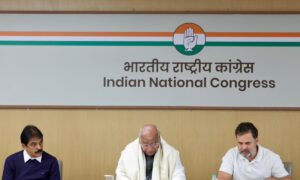
The UNICEF in its grim report on the floods in India, have said that an estimated 2.4 million children have been affected by the recent floods in India , calling for immediate support, more resources and innovative programmes to address the challenges faced.
In a statement, UNICEF said though flooding at this period of the year is common, this widespread scale of floods during mid-July is unusual.
“In India, over 6 million people across Bihar, Assam, Odisha, Gujarat, Maharashtra, Madhya Pradesh, Kerala, Uttarakhand, Uttar Pradesh and West Bengal have been affected by the floods, including an estimated 2.4 million children,” it said.
UNICEF said it is working with the government and partners to respond quickly and effectively.
It said it is also supporting the Assam government to implement the COVID-19 adapted relief camp management guidelines and child friendly spaces in select districts, in addition to its focused support for maternal and child health service continuity and COVID-19 response in many states, the statement said.
Weeks of torrential monsoon rains, widespread flooding and deadly landslides in Bangladesh, India and Nepal have affected millions of children and families, UNICEF said.
“Even for a region that is all-too-familiar with the devastating impact of extreme weather, the recent heavy monsoon rains, rising floods and continued landslides are creating a perfect storm for children and families affected,” said Jean Gough, UNICEF Regional Director for South Asia.
“The COVID-19 pandemic and containment and prevention measures add an additional complication to the mix, as COVID-19 cases are accelerating in some of the affected areas,” she added.
Gough said the fall-out from the COVID-19 pandemic is being compounded by climate change and extreme weather events and are arguably the biggest issues affecting children in South Asia right now.
Immediate support, more resources and innovative programmes are urgently needed to address the challenges that these threats represent to the region’s children, she said.
[the_ad id=’22723′]


















